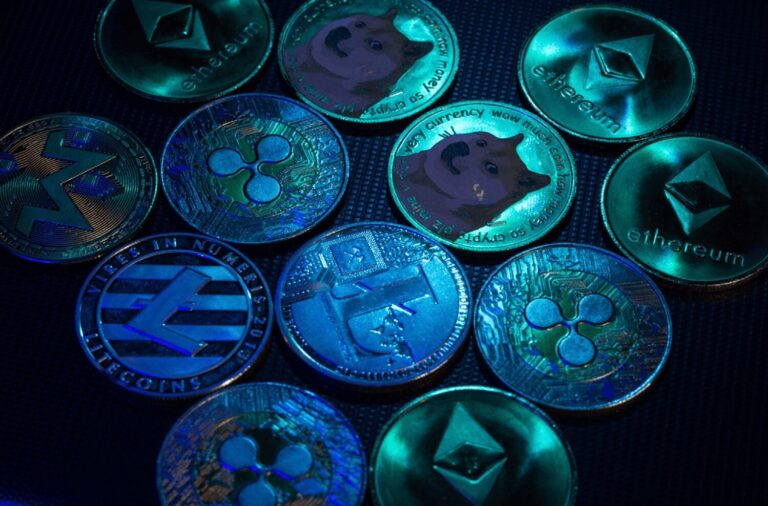
Introduction
Every day, trillions of dollars move across borders — from corporate supply chain payments to remittances sent home by migrant workers. Yet the global payment system remains slow, costly, and fragmented. A wire transfer from New York to Manila can take days and cost as much as 10% of the transaction amount.
Ripple Labs, through its digital asset XRP and payment network RippleNet, claims to have a faster, cheaper solution. But beyond the crypto hype, how does XRP actually work in cross-border payments?
We reviewed Ripple’s technical documentation, industry reports, and case studies from financial institutions to understand how XRP fits into the payment infrastructure.
The Problem with Legacy Cross-Border Payments
The current system relies heavily on the SWIFT messaging network, which connects over 11,000 banks and financial institutions. But SWIFT itself doesn’t move money — it sends payment instructions, leaving settlement to the banks.
Challenges include:
-
Multiple Intermediaries: Payments pass through several correspondent banks.
-
Delayed Settlement: Transactions can take two to five business days.
-
High Costs: Each intermediary adds fees, and exchange rate spreads often add hidden charges.
-
Lack of Transparency: Senders can’t track payments in real time.
Ripple’s Vision: Instant Global Settlement
RippleNet is a blockchain-based payment network designed to bypass traditional banking bottlenecks. Within RippleNet, XRP can act as a bridge currency between two fiat currencies.
Instead of requiring direct fiat-to-fiat corridors for every possible currency pair, RippleNet enables transactions via XRP:
-
Bank/Payment Provider A converts currency into XRP.
-
XRP is sent across the XRP Ledger (settles in about 3–5 seconds).
-
Bank/Payment Provider B converts XRP into the destination currency.
Why XRP Works as a Bridge Asset
Speed: The XRP Ledger processes transactions in seconds — much faster than SWIFT or ACH systems.
Low Cost: Fees are typically fractions of a cent, independent of transaction size.
Liquidity On Demand: Ripple’s On-Demand Liquidity (ODL) product allows financial institutions to source XRP from exchanges in real time, eliminating the need for pre-funded accounts in foreign currencies.
Scalability: The XRP Ledger can handle 1,500+ transactions per second, with capacity to scale further.
Real-World Use Cases and Partners
Santander (Spain)
-
Integrated RippleNet for its One Pay FX app, enabling faster international transfers in select corridors.
-
Customers can send euros to the UK or US in the same day, with full fee transparency.
Tranglo (Asia-Pacific)
-
Uses Ripple’s ODL for real-time cross-border payments in Southeast Asia.
-
Eliminates the need for intermediaries in certain corridors, reducing costs for remittance providers.
SBI Remit (Japan)
-
Works with Ripple to facilitate transfers to the Philippines and Thailand.
-
Partners with local payment networks for instant disbursement.
Pyypl (Middle East & Africa)
-
Leverages XRP to connect hard-to-reach corridors in emerging markets, where traditional banking rails are costly or nonexistent.
The Technical Backbone: XRP Ledger
-
Consensus Mechanism: Unlike Proof-of-Work systems, XRP Ledger (XRPL) uses a unique node list (UNL) consensus protocol, allowing fast validation without mining.
-
Energy Efficiency: Transactions consume minimal energy compared to Bitcoin or Ethereum’s earlier Proof-of-Work era.
-
Transparency: All transactions are public and verifiable on the ledger.
Regulatory Landscape and Challenges
Ripple’s legal battle with the U.S. Securities and Exchange Commission (SEC) over whether XRP is a security has clouded its adoption in the American market. However:
-
Courts have ruled that XRP itself is not inherently a security when sold on exchanges.
-
Ripple continues expanding partnerships in Asia-Pacific, Latin America, and the Middle East, where regulations are clearer.
The bigger challenge remains convincing traditional banks to shift away from entrenched SWIFT workflows — a process that takes both time and regulatory assurance.
Why It Matters
Global payments are projected to reach $250 trillion annually by 2027. Even a small share of this market could represent enormous transaction volume for RippleNet and XRP.
“XRP isn’t meant to replace fiat currencies — it’s meant to make them move faster and cheaper,” says Marcus Tran, a fintech analyst at Global Payment Insights. “Its utility is in eliminating the friction of currency exchange and settlement.”
Conclusion
XRP’s role in cross-border payments isn’t about speculative trading — it’s about functioning as financial plumbing for the global economy. By offering near-instant settlement, low costs, and liquidity without pre-funding, XRP addresses the pain points of today’s payment infrastructure.
Whether regulatory clarity and bank adoption catch up to the technology will determine how much of the global payments market XRP ultimately captures. But one thing is certain: the idea of moving money as easily as sending an email is no longer just a vision — it’s already happening in some payment corridors, powered by XRP.


